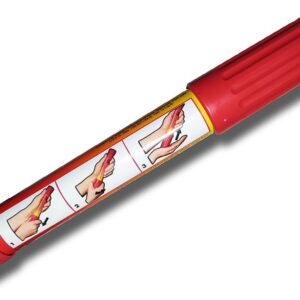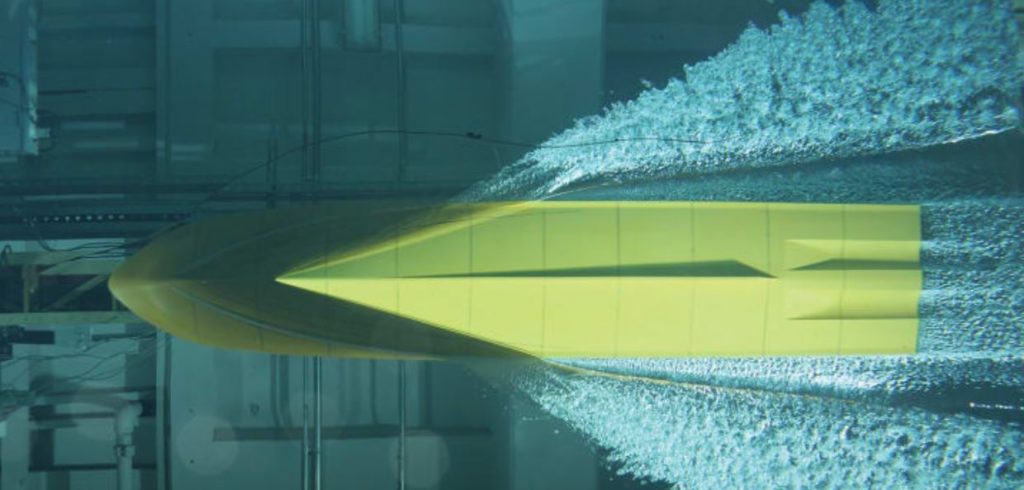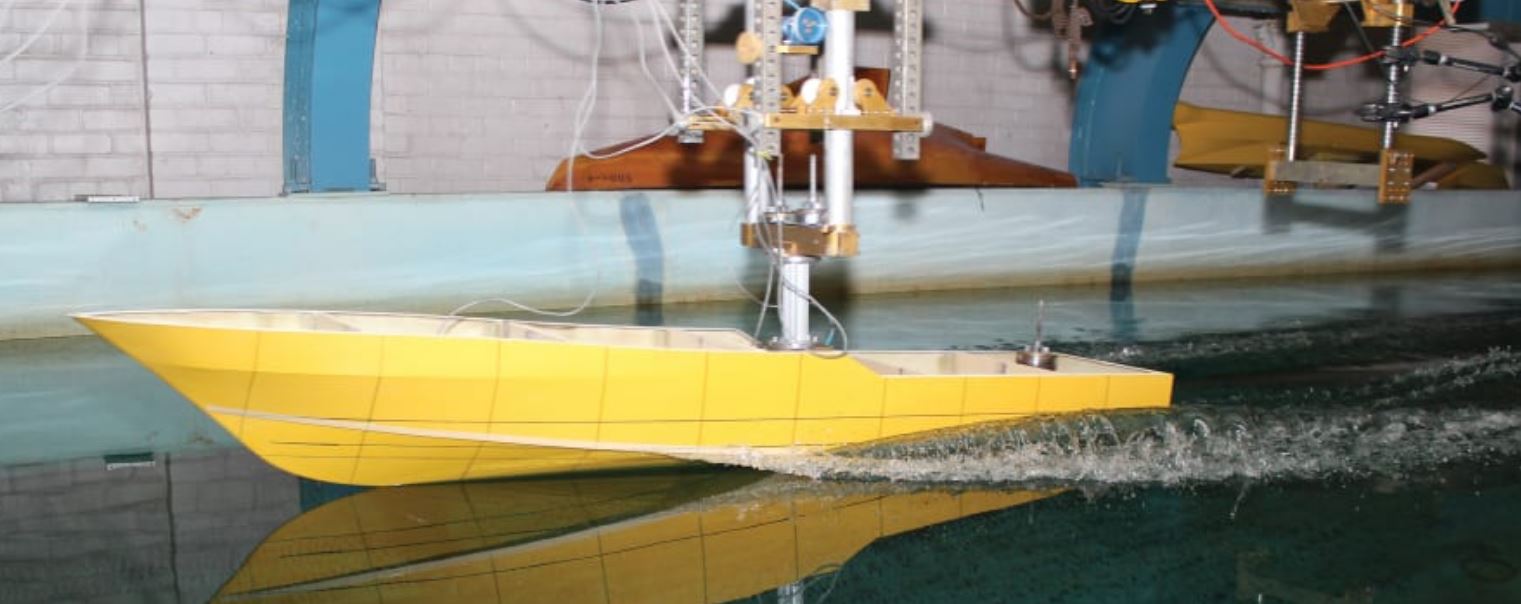

Safety equipment for Coastal Rowing Tours
The first coastal rowing tours have started again. This makes the topic of safety and safety equipment important again. Especially if you think about tours along the


The hull speed of coastal boats is the key to winning races on the water later. Longer boats with a longer waterline are faster than shorter boats. A well-known principle in boat building. At least when it comes to displacement boats, as our coastal boats usually are. You won’t believe it, but already by definition, some Coastal Boats are faster than others.
What is meant by hull speed: Hull speed, or displacement speed, is the speed at which the length of the bow wave of a coastal boat is equal to the length of the boat’s waterline. As the speed of the boat increases from a standstill, the length of the bow wave increases, and usually, its peak-to-valley distance (height) increases in the process. When hull speed is exceeded, a boat in displacement mode appears to rise on the back of its bow wave.
From an engineering point of view, the bow and stern waves overlap by design at hull speed, resulting in relatively large waves and, thus, a rather significant value for wave drag. A displacer’s wave drag increases smoothly as it approaches and exceeds hull speed, often with no noticeable bend at hull speed.
What counts is the actual waterline. The waterline length is the length of the boat from bow to stern where it lies in the water. In other words: If you mark the point at the bow where the water touches the boat and mark the point at the stern where the water touches the boat, and then measure that distance, that is the waterline length. Many researchers and boat builders have confirmed this.

By the way, if you were to connect the marks on the bow and stern and paint a line on the boat’s hull, you would have what is called a “boat stripe”. The boat stripe is the line painted on many boats that separates the bottom, which is underwater, from the parts that are above water.
If you watch a coastal boat move through the water, you will notice that it creates both a bow wave and a stern wave as it moves through the water. The length of the bow wave increases as the speed of the boat increases. The faster the boat, the larger these two waves become, until eventually they become a single wave. At this point, the boat has reached its “hull speed.” This means that this is the highest speed it can reach. It cannot go faster because it is caught in this wave. The longer the boat is, the faster it can “theoretically” go because it takes longer for the bow and stern waves to become one wave. You can calculate the hull speed or displacement speed of a displacer with the following formula.
Hull speed = 1.34 X (Square root of waterline length). For example, if your boat is 36 feet long the hull speed would be calculated as follows: square root of 36 = 6
6 X 1.34 = 8.04 kts. hull speed, 1kn: 1.85 km
Let’s imagine a Co1x has a water surface of exactly a) 6.00 meters. The competitor product has b) 5.50 meters
Boat A) 600 x 19.67 inches : 1.34 x 4.44 / 5.94 kn x 1.85: Speed: 10.99 km(hrs)
Boat B) 550 x 18.02 inches, 1.34 x 4.24 / 5.69 kn x 1.85: Speed: 10.52 km (hrs) – looses 479 m agains boat A /hrs
So the boat A is almost 240 (480) meters faster in 30 (60) minutes. This means that in an Endurance Race of 6Km and ca. 25 minutes, the lead of the Boat A) will be at least 200 meters due to the waterline shape.
This doesn’t sound like a lot, of course, and Coastal boat regattas, in particular, are often unpredictable, but it can definitely make a difference. If you have any questions about different boat speeds, we at Coastal Boats are happy to help! Is this a theoretical case?. We dont find many boats in Coastal races which are shorter than Fisa Specs. Plus, Coastal boats are not 100% displacement boats. Most of them have a gliding shape at their stern. But: at some local and pop up races you might compete with shorter boats, depending on the local registration rules. If you have a 600cm boat, you certainly have an advantage against shorter boats. What do you think about the hull speed factor at Coastal Regattas? Let us know in the comments!


The first coastal rowing tours have started again. This makes the topic of safety and safety equipment important again. Especially if you think about tours along the


What’s the best way to protect your Coastal Boat from the heat? And what can extreme heat do to your Coastal Boat? During the summer, many


The Baltic Sea near Gdansk offers a beautiful and diverse environment for various activities. It was also choosen as host for the 2024 European Coastal
| Cookie | Duration | Description |
|---|---|---|
| VISITOR_INFO1_LIVE | 6 months | YouTube sets this cookie to measure bandwidth, determining whether the user gets the new or old player interface. |
| VISITOR_PRIVACY_METADATA | 6 months | YouTube sets this cookie to store the user's cookie consent state for the current domain. |
| YSC | session | Youtube sets this cookie to track the views of embedded videos on Youtube pages. |
| Cookie | Duration | Description |
|---|---|---|
| sbjs_current | session | Sourcebuster sets this cookie to identify the source of a visit and stores user action information in cookies. This analytical and behavioural cookie is used to enhance the visitor experience on the website. |
| sbjs_current_add | session | Sourcebuster sets this cookie to identify the source of a visit and stores user action information in cookies. This analytical and behavioural cookie is used to enhance the visitor experience on the website. |
| sbjs_first | session | Sourcebuster sets this cookie to identify the source of a visit and stores user action information in cookies. This analytical and behavioural cookie is used to enhance the visitor experience on the website. |
| sbjs_first_add | session | Sourcebuster sets this cookie to identify the source of a visit and stores user action information in cookies. This analytical and behavioural cookie is used to enhance the visitor experience on the website. |
| sbjs_migrations | session | Sourcebuster sets this cookie to identify the source of a visit and stores user action information in cookies. This analytical and behavioural cookie is used to enhance the visitor experience on the website. |
| sbjs_session | 1 hour | Sourcebuster sets this cookie to identify the source of a visit and stores user action information in cookies. This analytical and behavioural cookie is used to enhance the visitor experience on the website. |
| sbjs_udata | session | Sourcebuster sets this cookie to identify the source of a visit and stores user action information in cookies. This analytical and behavioural cookie is used to enhance the visitor experience on the website. |
| Cookie | Duration | Description |
|---|---|---|
| __cf_bm | 1 hour | This cookie, set by Cloudflare, is used to support Cloudflare Bot Management. |
| CookieLawInfoConsent | 1 year | CookieYes sets this cookie to record the default button state of the corresponding category and the status of CCPA. It works only in coordination with the primary cookie. |
| elementor | never | The website's WordPress theme uses this cookie. It allows the website owner to implement or change the website's content in real-time. |
| wpEmojiSettingsSupports | session | WordPress sets this cookie when a user interacts with emojis on a WordPress site. It helps determine if the user's browser can display emojis properly. |
| Cookie | Duration | Description |
|---|---|---|
| __eoi | 6 months | Security for AdSense, AdSense for Search, Display & Video 360, Google Ad Manager, Google Ads |
| mailchimp_landing_site | 1 month | MailChimp sets the cookie to record which page the user first visited. |
| wp-wpml_current_language | session | WordPress multilingual plugin sets this cookie to store the current language/language settings. |
| yt-player-headers-readable | never | The yt-player-headers-readable cookie is used by YouTube to store user preferences related to video playback and interface, enhancing the user's viewing experience. |
| yt-remote-cast-available | session | The yt-remote-cast-available cookie is used to store the user's preferences regarding whether casting is available on their YouTube video player. |
| yt-remote-cast-installed | session | The yt-remote-cast-installed cookie is used to store the user's video player preferences using embedded YouTube video. |
| yt-remote-connected-devices | never | YouTube sets this cookie to store the user's video preferences using embedded YouTube videos. |
| yt-remote-device-id | never | YouTube sets this cookie to store the user's video preferences using embedded YouTube videos. |
| yt-remote-fast-check-period | session | The yt-remote-fast-check-period cookie is used by YouTube to store the user's video player preferences for embedded YouTube videos. |
| yt-remote-session-app | session | The yt-remote-session-app cookie is used by YouTube to store user preferences and information about the interface of the embedded YouTube video player. |
| yt-remote-session-name | session | The yt-remote-session-name cookie is used by YouTube to store the user's video player preferences using embedded YouTube video. |
| ytidb::LAST_RESULT_ENTRY_KEY | never | The cookie ytidb::LAST_RESULT_ENTRY_KEY is used by YouTube to store the last search result entry that was clicked by the user. This information is used to improve the user experience by providing more relevant search results in the future. |
Do you like our articles so far? You are always up to date with our newsletter